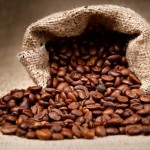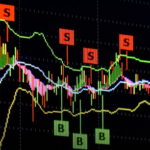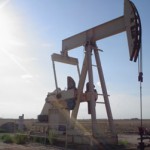Agricultural commodity prices to fall again in 2018, says Goldman Sachs

Agricultural commodity prices, on course for a third successive year of decline, are on course for a fourth, Goldman Sachs said, even as it lifted its forecast for cotton prices.
The investment bank forecast commodity returns overall, as measured by the S&P GSCI index, hitting a positive 7.5% over 2018, in what would be a third successive year of in the black, following headway of 1.6% so far this year, and 15.2% in 2016.
“We have long argued that real assets, such as commodities, have historically outperformed as the business cycle matures, and the demand backdrop today is now even stronger than a year ago,” the bank said, also flagging “clear diversification benefits” for investors from “being long commodities”.
Energy values were forecast to offer the biggest returns of any commodity sector, of 12.4%.
Cotton price upgrade
However, agricultural commodities will offer a return of a negative 0.9% over 2018, extending a run of losses.
Returns so far this year come in at a negative 12.8%, with those last year at a negative 3.6%, and in 2015 at a negative 17.1%.
The forecast came even as Goldman Sachs raised by 5 cents a pound to 75 cents a pound its forecast for New York cotton futures on three, six and 12-month time horizons, putting itself a little ahead of the market on a late-2018 basis.
Investors were on Wednesday pricing December 2018 cotton futures at 72.83 cents a pound.
‘Robust demand’
The upgrade reflected expectations for “robust” demand for cotton, spurred by strengthening economic growth, and the dent to the competitiveness of man-made fibres, such as polyester, from the rising price of raw material crude oil.
“While supply expectations remain high, we have cautioned that these need to be balanced against accelerating global growth,” the bank said.
Goldman Sachs was upbeat on prospects for prices of arabica coffee too, seeing values at 140 cents a pound in a year’s time, ahead of the 133.65 cents a pound being priced in to December 2018 futures.
The bank again cited “stronger global growth” ahead, also stressing a “continued rotation towards the consumer in key emerging markets such as China”.
It also flagged the prospect of “stabilisation of the Brazilian real exchange rate versus the US dollar”, after the depreciation of this year which contributed to declines in dollar prices of many assets in which the South American country is a key player.
‘Lower supply’
The bank was optimistic on cocoa prices too, seeing New York futures at $2,000 a tonne in 12 months’ time – ahead of the December 2018 contract price of $1,968 a tonne – saying it expected a “strong trend” in grinding to continue, given expectations for global economic growth.
This when “2017-18 supply is very likely to decline – due to excessive rainfall (increasing disease risks) and lower fertilizer application, due to falling prices and farmer revenues in the 2016-17 crop year”.
However, on raw sugar, a forecast for prices at 14 cents a pound in a year’s time was below the futures curve, with Goldman Sachs saying “strong supply trends” will likely see a “new record in global sugar output”, although adding that demand will rise too.
And among grains, it forecast wheat futures at $4.25 a bushel at the close of next year, behind the $4.79 ¼ a bushel the December contract was trading at.
Corn vs soybeans
Goldman Sachs was also downbeat on prospects for Chicago corn prices, seeing them at $3.50 a bushel in a year’s time – in with the current spot prices, but below the $3.83 ½ a bushel priced in to the December 2018 contract.
Indeed, it forecast “corn prices remaining flat at $3.50 a bushel for 3, 6 and 12 months”, supported by the level of production costs.
However, for soybeans, the bank foresaw flat prices over the next 12 months of $9.80 a bushel, roughly in line with the futures curve, but signalling a new price relationship between the two crops, with soybean values seeing a “new normal” of 2.8 times those of corn, compared with a historic ratio of 2.5 times .
“We see higher demand for soybeans versus corn as the global growth recovery continues, and as China continues to rebalance towards a more consumer-driven economy.”
‘Moderately bearish’
In the livestock complex, Goldman Sachs stuck with value expectations for both lean hogs and live cattle below those investors are pricing in.
For live cattle, it voiced a “moderately bearish” view, forecasting Chicago futures at 100 cents a pound in a year’s time, below the 11.20 cents a pound that the December 2018 contract is trading at, undermined by strong supplies.
“With several consecutive months of greater than 10% year-on-year feedlot placements and cattle feedlot inventory now well above long-term averages, we believe slaughter availability will be very healthy.”
For hogs, the bank forecast prices at 60 cents a pound at the end of next year, below the 63.775 cents a pound at which the market currently values December 2018 futures.
“We expect a large and growing breeder herd, healthy farrowing intentions, and modest improvements in productivity to drive an expansion in hog supplies into 2018.”
Source: Agrimoney – Agricultural commodity prices to fall again in 2018, says Goldman Sachs





























